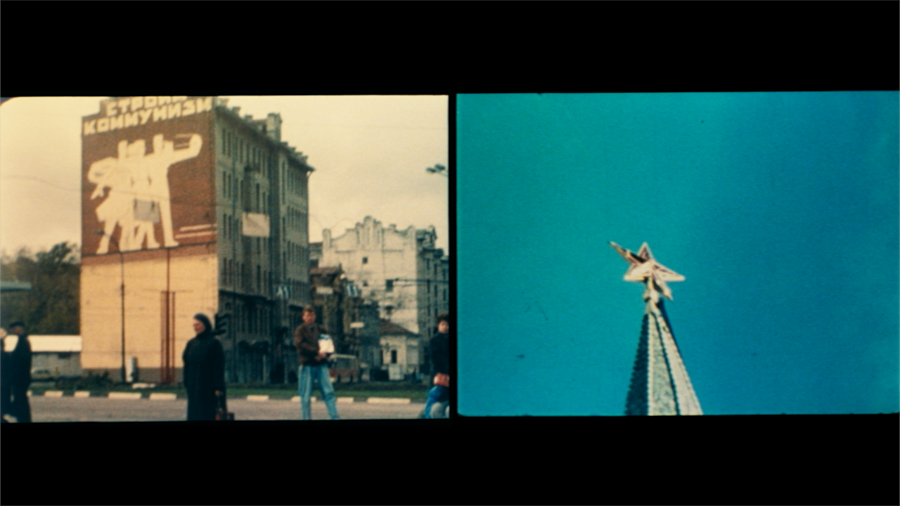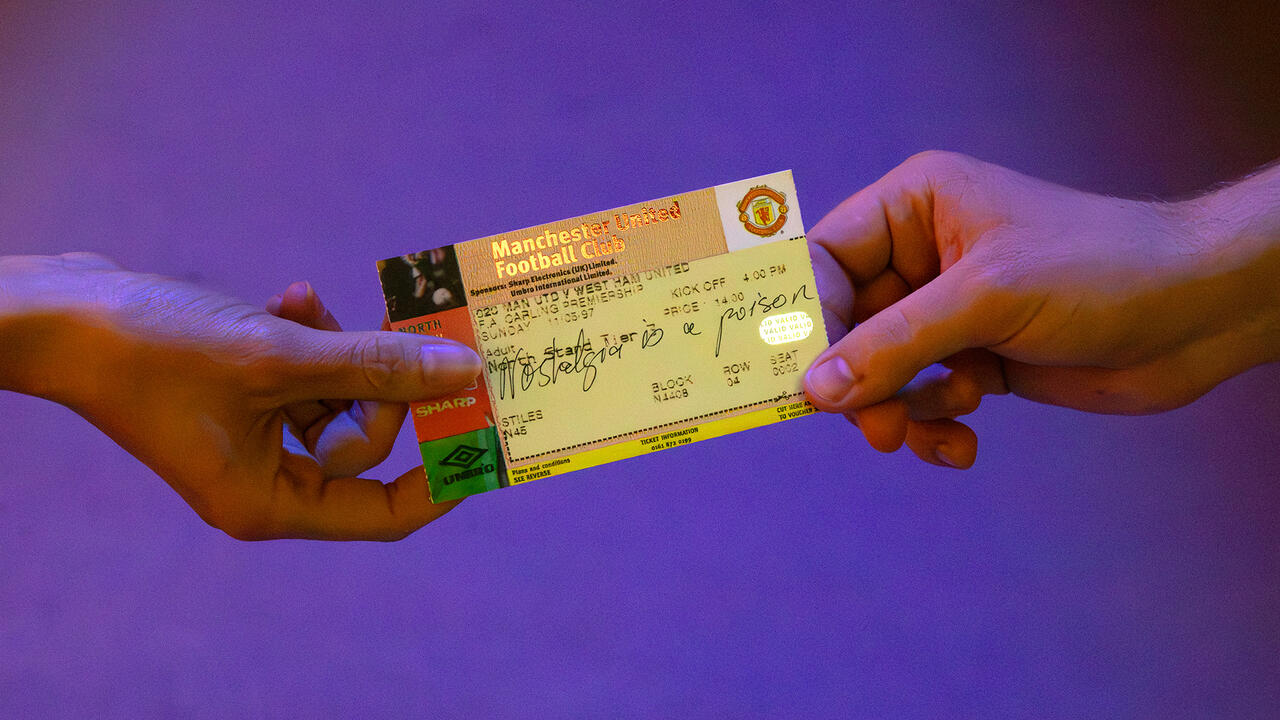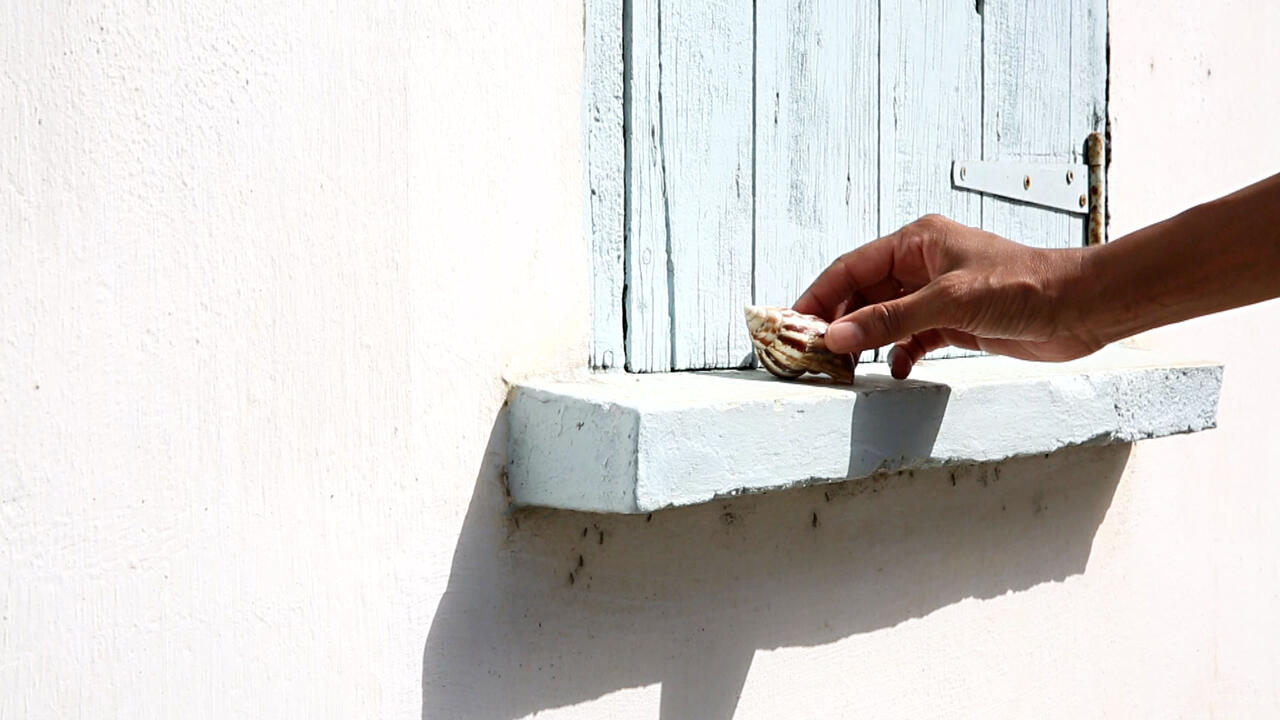Vivian Ostrovsky’s Playful Politics
A new anthology of 16 films made between 1982 and 2014, highlights the director’s innovative, international approach to her art
A new anthology of 16 films made between 1982 and 2014, highlights the director’s innovative, international approach to her art

Born in 1945 in New York to a father who spent time living in Russia, Prague and Istanbul, raised in Rio de Janeiro and educated at the Institut de Psychologie and the Sorbonne in Paris, Vivian Ostrovsky is a truly internationalist filmmaker. Some of the works on Re:Voir’s new anthology, Plunge (2019), deal with the ideology and achievements (more than the failures) of the Soviet Union – where she never lived – and how it compared to the USA at the height of the Cold War. Many, however, are set at the beach – places that feel broadly similar across the world, regardless of which nation’s borders they form, promising carefree happiness on their sands and the possibility of a better world beyond their horizons.
Plunge contains about half of Ostrovsky’s output: 16 films made between 1982 and 2014. Most of these combine archival material – often from the Israel Film Archive, with which her father was involved – with Ostrovsky’s own Super-8 footage. The two are sometimes hard to distinguish, given the nostalgic feel of Super-8 as a medium, not just because its home-movie heyday was in the 1960s and 1970s but also due to its inherent qualities – its grainy texture and faded colours make footage look dated from the moment of its development. Throughout these films, which are not ordered chronologically, we see Ostrovsky gradually incorporating digital elements, from the subtlety of a small object bouncing across found footage of beach-goers in Ice Sea (2005) to the images from her family travels and home movies edited into her film about her parents, Wherever was Never There (2011). Mostly, though, these works are combinations of Ostrovsky’s footage with untreated archived stock.

Some of Ostrovsky’s sources should be familiar to cineastes, such as the clips in Losing the Thread (2014), which cuts unused footage from a collaborative project, Top Ten Designers in Paris (1980) with clips from the Russian actress Alla Nazimova’s high-camp staging of Wilde’s Salomé (1922), Iakov Protazanov’s constructivist sci-fi melodrama Aelita (1924), Jack Smith’s underground queer short Flaming Creatures (1963), Vera Chytilová’s Daisies (1967) and work by Kenneth Anger and Federico Fellini. Conversely, P.W. – Paintbrushes and Panels (2010), about modern architect Paulo Werneck, was commissioned for an exhibition at Rio de Janeiro’s Museum of Modern Art. The footage here keeps us anchored in Brazil, reflecting the fact that Werneck never left his homeland and so never found the international fame of his colleagues Lúcio Costa and Oscar Niemeyer; it is largely sourced from the archive that Werneck’s family kept, cut together with political material more likely to be known to Brazilians than anyone else.
Ostrovsky’s material is diverse, geographically and historically. U.S.S.A. (1985) cuts from a hammer and sickle to the Coca-Cola logo, from the Kremlin to the World Trade Center, making the inference that the Cold War empires propagated their opposing ideologies in similar ways. Work and Progress (1999), a two-screen work made with Yann Beauvais during the ‘end of history’ that had apparently occurred with the Soviet Union’s collapse, was inspired by Dziga Vertov’s Man with a Movie Camera (1929). It merges their filming of post-Soviet Moscow and Riga (including buildings designed by Sergei Eisenstein’s father) with propaganda films recently donated to the Israel Film Archives after Israel’s Communist Party closed down, and Super-8 films that Ostrovsky’s Russian family bought her from souvenir shops. Frequently, Ostrovsky’s combination of found and filmed material is playful, notably in another two-screen work, Tatitude (2009). Credited as ‘Un Film de Ostrovstati’, it was shot on the beach where Jacques Tati made Les Vacances de Monsieur Hulot (Mr Hulot’s Holiday, 1953). In the extensive DVD booklet Ostrovsky is quoted as saying that she wanted to explore the changes that occurred in how ‘people express their eccentricities through body language’ between Tati’s time and her own; its approach is typical of her dry, playful humour.

Ostrovsky has an unfussy way of cutting between her material: her shifts aren’t as abrupt as (say) Adam Curtis nor as rapid as Jonas Mekas, and she rarely employs the optical print trickery of Austrian filmmaker Martin Arnold, although some of her footage gets cut into a stop-motion style, or sped up to convey time lapses, as often seen in works by the London Film-Makers’ Co-operative. What really links these films, then, is Ostrovsky’s use of music. Like the archive footage, it is sometimes named in the credits, but often not; it is occasionally familiar, with its recognisability used for ironic effect, but more often used to create a mood than to denote anything more concrete. In one of the best films here, Uta Makura (Pillow Poems) (1994), which draws on Sei Shônagon’s 11th-century observations of Japanese court life, Ostrovsky’s moving between recordings of contemporary Japanese tourists talking or taking photos, traditional Japanese music and modern Japanese pop shifts us away from concerns about a western Orientalist gaze and instead provokes reflections about how eastern and western cultures inform, complement and clash with each other. These dialectics – between image and sound, culture and ideology, past and present – recur throughout these works, and make up an oeuvre that sits comfortably within a history of archive filmmaking but also feels diverse and distinctive.
Vivian Ostrovsky, Plunge is available from Re: Voir, Paris
Main image: Vivian Ostrovsky, Public Domain, 1996, film still. Courtesy: the artist






















